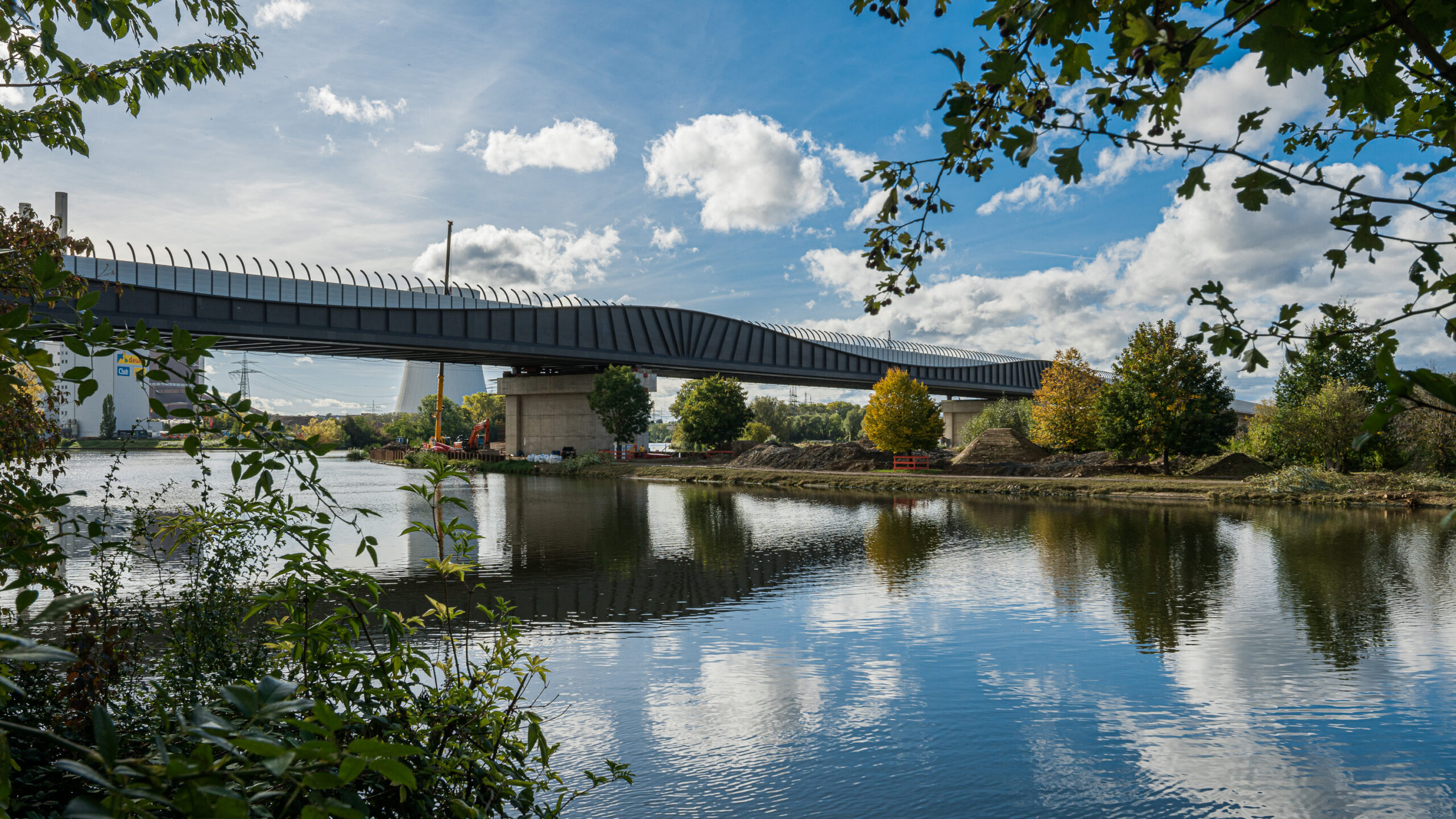
Dillinger heavy plate for the
new Neckar Bridge Heilbronn
A high stressed section of the German highway A6 becomes more efficient and safer thanks to Dillinger steel
The German highway A6 is considered one of the most important east-west connections between France and Central and Eastern Europe. The section between the Wiesloch/Rauenberg junction and the Weinsberg interchange (47 km), which is highly congested with more than 100,000 vehicles per day (forecast 2025), had to be made more efficient and safer.
The key point was the 1,337 m long old Neckar valley crossing, which was no longer able to cope with modern traffic loads. Expansion measures include a six-lane extension over a total length of 25.5 km and the construction of a new Neckar valley bridge.
Construction occurs in two sections: After completion of the first carriageway in March 2019, which was initially built parallel to the old route, the old Neckar Valley Bridge was demolished in June 2019. Construction of the second carriageway (with the second half of the bridge) will be carried out in the same way. The complete expansion measures are scheduled to be completed in 2022.
Wave-shaped
Thus, four bridges will be replaced by two single bridges, the “foreland bridge west” and the “Neckar Valley Bridge”. With a length of approx. 1.3 km and a total bridge area of 56,000 m2 this valley crossing is the longest motorway bridge in Baden-Württemberg. The Neckar Bridge, which weighs 5,500 t and contains the crossing between the railway line and the Neckar, consists of a 511 m long steel trough with wave-like webs and spans of around 100 m.
The attractive, wave-shaped construction of the longitudinal girders is between 3.80 m (field area) and a maximum of 8.30 m high (above the bridge piers). This geometry could only be implemented by using a special high strength fine grained steel.
Advanced in design and material
For the efficient realization of this slim design, the high strength steel S460M/ML from Dillinger was used. In order to benefit even more from its higher strength, a minimum yield strength of 460 MPa was ordered, independent of plate thickness (even in large thicknesses), often colloquially referred to as “constant yield strength”. This extra strength exceeds the current standard requirement in some cases by up to 75 MPa, thus enabling the bridge constructor to achieve further material savings – an ideal example of resource-saving and sustainable use of raw materials.
The dimensions of the steel plates used are also impressive: they are up to 110 mm thick. For comparison, the plates of the old bridge were 12 mm thick! After all, the new bridge is supposed to last a long time – and under conditions that have quite clobbered the old one.
For this forward-looking structure, Dillinger supplied more than 5,300 t of heavy plate in the qualities S355J2+N, S460 M/ML in thicknesses between 12 and 110 mm.
Data
Contact persons

Natalie Federmeyer
Sales Director
Wind Power & Construction
Phone: +49 6831 473449
Fax: +49 6831 47992685
E-Mail

Dr. Tobias Lehnert
Marketing Dillinger Saarstahl, Head of Department Wind Power & Construction
Phone: +49 6831 472394
Fax: +49 6831 473089
E-Mail

Timm Condé
Senior Sales Manager, Steel Construction
Phone: +49 6831 472196
Fax: +49 6831 47992681
E-Mail


